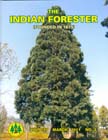Carbon Sequestration Potential of Selected Plantation Interventions in Terai Region of Uttarakhand
DOI:
https://doi.org/10.36808/if/2011/v137i3/12122Keywords:
Carbon Sequestration, Terai Region, Climate Change, Potential, UttarakhandAbstract
Selected afforestation and reforestation interventions have been studied in the Terai region of Uttarakhand with the objectives to assess their carbon sequestration potential, and cost-effectiveness exclusive and inclusive of carbon benefits. The excel spreadsheet model "Project Based Comprehensive Mitigation Assessment Process" was employed to workout the annual incremental carbon sequestration, cost effectiveness indicators and likely benefits under different carbon price scenarios for each selected afforestation and reforestation intervention. The results have shown a wide range of sequestration potential, which varied from 0.74 tC/ha/yr in case of amla block plantation to 2.34 tC/ha/yr for Triphala block plantation, calculated for the assessment period 2008-38. However, for the 'with wood products' scenario, the maximum sequestration potential was observed for poplar block plantation (2.41 tC/ha/yr), closely followed by Eucalyptus block (1.73 tC/ha/yr), while teak block plantation showed sequestration potential of 1.50 tC/ha/yr. Among the selected plantation interventions under 'without wood products' scenario, Triphala block, NTFP block, and NTFP bund were observed to be associated with maximum carbon benefits, viz., Rs. 1976/-, Rs. 1841/- and Rs. 1518/- per ha per year respectively. The study has demonstrated that plantation interventions involving NTFP species associated with appreciable recurring non-carbon benefits are more likely to succeed as afforestation and reforestation CDM project interventions compared to fast growing commercial tree species, viz., popular and Euealyptus on furmlands.Downloads
Download data is not yet available.
Downloads
Published
2011-03-01
How to Cite
Gera, N., Gera, M., & Bisht, N. S. (2011). Carbon Sequestration Potential of Selected Plantation Interventions in Terai Region of Uttarakhand. Indian Forester, 137(3), 273–289. https://doi.org/10.36808/if/2011/v137i3/12122
Issue
Section
Articles
License
Unless otherwise stated, copyright or similar rights in all materials presented on the site, including graphical images, are owned by Indian Forester.





